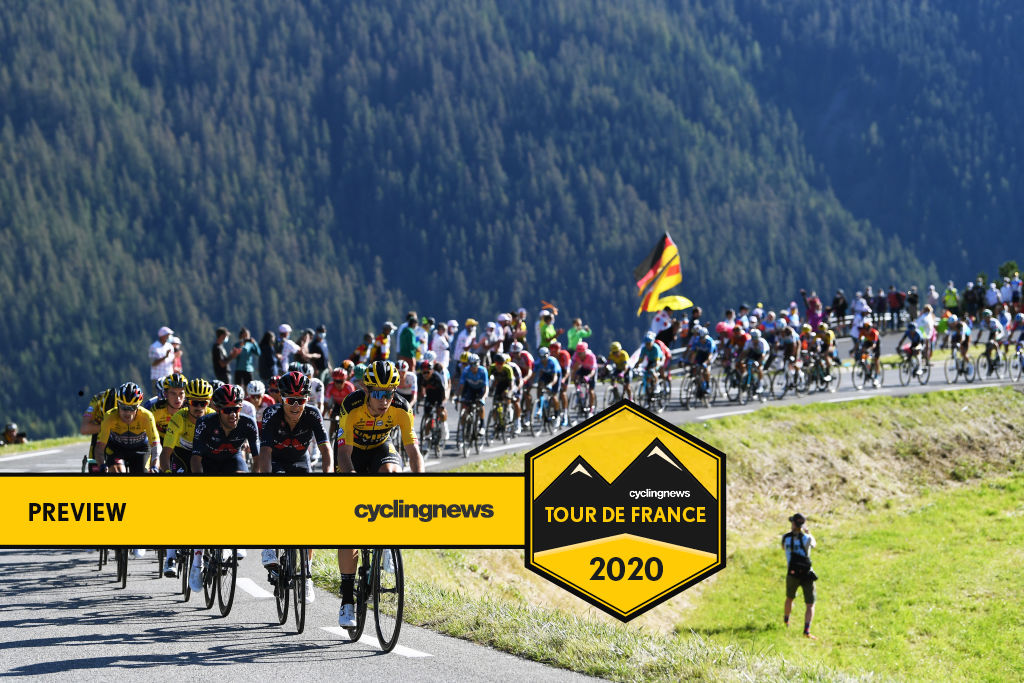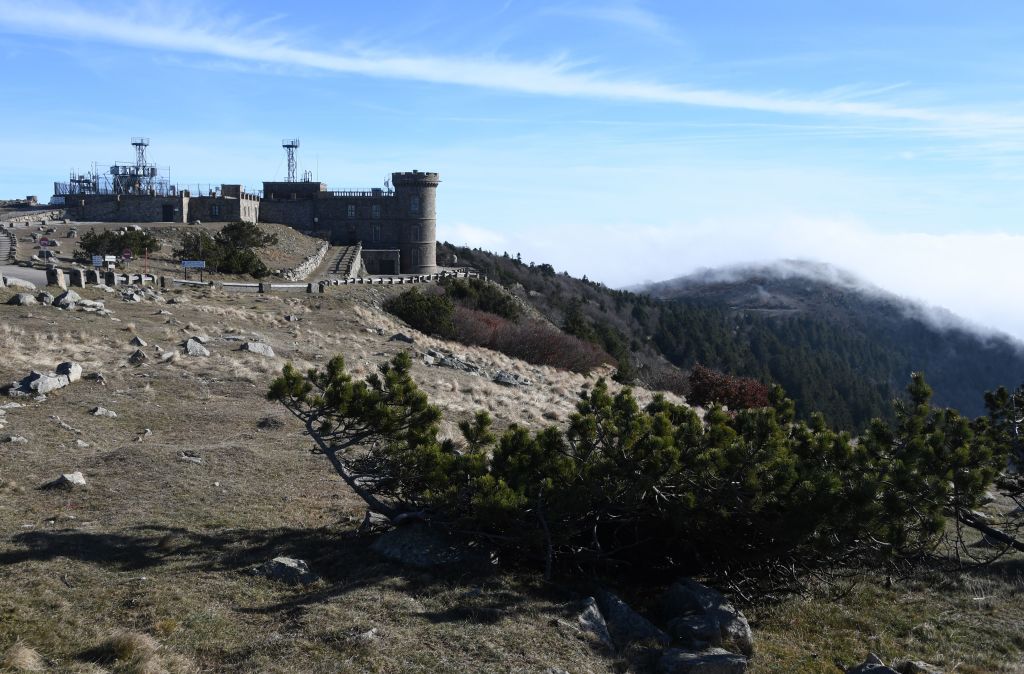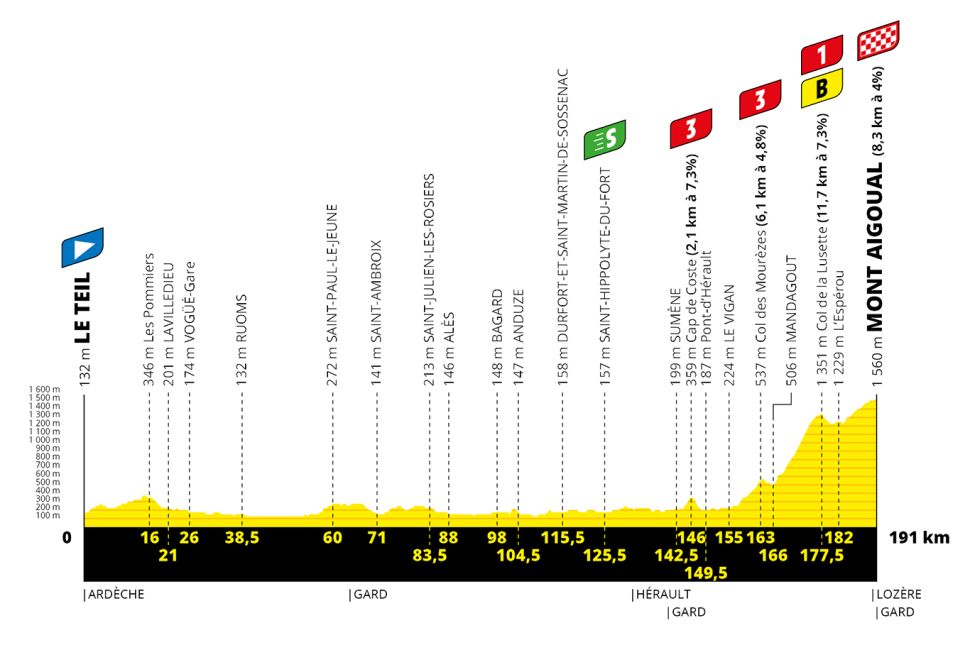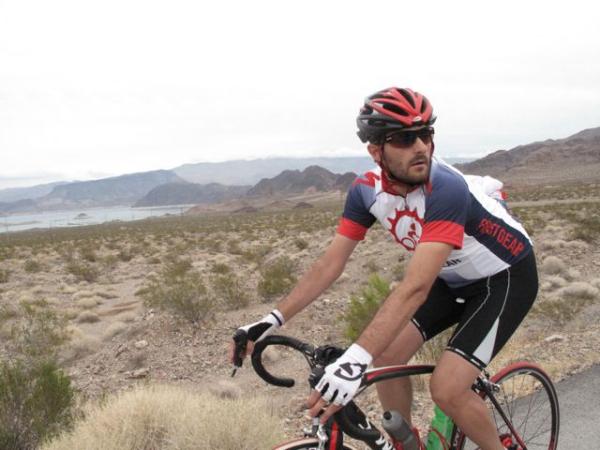Tour de France stage 6: Stunning new summit finish as GC road nears Pyrenees
Col de la Lusette and Mont Aigoual the next plot twist in an unusual year

Stage 6 of the Tour de France between Le Teil and Mont Aigoual continues Christian Prudhomme's desire to break with convention, with the 2020 edition of the race reaching its second summit finish within its first week, and presenting a climb never used before as the final ascent on an incomparable Tour route that continues its search for unprecedented moments. The stage takes place in the Massif Central but in just two more days the race enters the Pyrenees, and stage 6 is a worthy appetiser.
Little is know about Mont Aigoual (1,560m) in relation to the Tour. Its 8.3km ascent was used just once during stage 17 of the 1987 race, when Charly Mottet wore the maillot jaune. That year, Mont Aigoual came before the finish, with Jean-Paul van Poppel coming out on top in a reduced bunch sprint in Avignon, taking what would be the first of his nine Tour stages.
The climb has been compared to Mont Ventoux given that it, too, has a weather station – this one built in 1894 – but the landscape is far different, with wooded vistas and views from the Alps to the Pyrenees.
And there's just as much mystique surrounding the penultimate climb of the Col de la Lusette, which, according to Prudhomme, once humbled the great Bernard Hinault during an edition of the late Midi Libre in the 1980s, with the five-time Tour winner forced to dismount and walk up the slopes. When asked about the incident, the French icon apparently replied to one journalist: "I don't remember this stage. I know that one year I wasn't in great shape at the Midi Libre, but I don't remember which year." It's likely that 'The Badger' was in fine shape, but, without knowing the climb, decided to tackle it with a 42x21 and paid the price.
Gentle beginnings turn to inspiring mountain terrain

The route for the 191km stage is relatively flat until it reaches the final portion, where all the climbs are located, with the opening kilometres meandering through the Ardeche region as it gently climbs through Lavilledieu. This is where a break could launch, and from there the race should fall into a familiar pattern with the climbs commencing with the third-category Cap de Coste peaking out at 146km.
The ascent is just 2.1km in length, but it acts as a warm-up ahead of the sterner Col des Mourèzes. Like the Cap de Coste, the Col des Mourèzes is another third-category affair, but at 6.1km it's almost three times in length, although its average gradient is a rather more modest 4.8 per cent.
The run-off from Mourèzes is short and sweet, and it leads nicely into the Col de la Lusette, which was recommended to Tour-route designer Thierry Gouvenou by a childhood friend. This first-category ascent will stretch the peloton and probably reduce the field to team leaders and just a cluster of mountain domestiques. It's 11.7km in length, with an average gradient of 7.3 per cent, but it also holds steeper sections, which Gouvenou hopes will inspire attacking riders as he and Prudhomme usher the race away from more familiar roads.
Get The Leadout Newsletter
The latest race content, interviews, features, reviews and expert buying guides, direct to your inbox!
The steepest sections of around 11 per cent come roughly two-thirds into the ascent before the road levels off slightly, before gently climbing again. However, when the riders crest the top, they're greeted with only the briefest of respites as the road plateaus before Mont Aigoual begins. The final slog to the line is 8.3km in length, with an average gradient of four per cent, and while it's challenging, it would not, under normal circumstances, ignite a full GC assault.
The final two ascents combined, however, are a different proposition to what we saw on stage 4. Unlike Orcières-Merlette, the stage 6 finale has more of a climber's climb feel to it, and it will see the naturally gifted ascenders have their revenge after the super-quick power climb of Orcières-Merlette.
"We went to see the Col de la Lusette before the Ventoux race earlier in the summer," Allan Peiper, who actually raced over the climb during the 1987 Tour and was part of Jean-Paul van Poppel's Superconfex team, tells Cyclingnews.
"It's out of the way, so I don't know how many people have seen it, but it's a tricky final, and it's going to be about fighting for position. If a team is riding, then it's going to be complicated and technical. Then you come out to the final climb, but the damage could be done before that. Positioning is going to be really important. It might not be a decisive stage for the GC but some riders might lose time. If you add the Mourèzes, the Col de la Lusette and Mont Aigoual, there's only a short amount of descending between them, so the recovery time is going to be really short."
The balance between the break and the GC

The outcome of the stage may depend on how the first hour will be raced. The peloton took the majority of stage 5 relatively easily because they knew that the day would end in a bunch sprint, and because stage 6 looks perfectly suited to a breakaway.
However, the ingredients of the break need to be just right. Unlike in previous days, the successful composition cannot contain riders within around three minutes of the yellow jersey. An ingredient of that nature would spoil the mix and entice Mitchelton-Scott and Deceuninck-QuickStep into patrolling the front of the peloton for the majority of the stage. An effect from the first five days means that time gaps on GC are already present and have naturally expanded, so anyone from, say, Nicolas Roche (Sunweb) in 44th place, at 7:45 down on the yellow jersey, and who interestingly lost over seven minutes on stage 5, has a reasonable chance of escaping the clutches of the bunch.
At the point of the early attacks, it will be up to several teams to decide on what to do next. Most of the peloton will look to Deceuninck-QuickStep and Julian Alaphilippe, because even though they no longer have the race lead, they naturally do a lot of work on the front of the peloton with their heavy-duty pistons in Tim Declercq and Rémi Cavagna. The Belgian team, however, might at this point in the race look for allies or sit the stage out and encourage Mitchelton to take control. Any uncertainty over who could or should work will create hesitancy, and could provide an escape with all the momentum that they need in the opening kilometres.
The stage 4 finishing climb was too fast and too flat for Adam Yates, but with yellow now on his shoulders, Mitchelton-Scott have the firepower to help control a possible break. If Yates is truly at the Tour for stages and not GC, we could see the Australian team help keep the break in check in the hope that Yates can win in yellow. Such a moment would easily become the highlight of his career, and would go a long way to silencing the critics who suggest his presence in the maillot jaune only came about due to a technicality. Alaphilippe will be smarting from how he lost the lead, so the dynamic during the opening exchanges of the race could be hugely entertaining.
"It looks like a day for the break with a lot of kilometres to build up a break before the best climber in the move goes clear by trying to drop everyone," EF Pro Cycling's Tom Southam tells Cyclingnews.
"What I'm thinking is, how much energy do teams want to invest in this first week, including QuickStep? They've ridden a lot already, and if they've ridden a lot for [sprinter] Sam Bennett, then that should give us a clue. Primoz Roglic proved that he's the fastest uphill, but do Jumbo want to ride super hard to try to keep it together for another stage win? Of course, there are time bonuses involved, but at this point, you're just creeping ahead."
Southam's point over Jumbo-Visma's resources is well-founded. The Dutch team have two stages wins to their name, but if they're playing the long game in the Tour de France, then they'll need to forgo the possibility of bonus seconds at the top of both the Col de la Lusette and the Mont Aigoual, and think about the second and third weeks of this year's race, when seconds can quickly be extended into minutes.
"If the bunch keeps the break at three minutes, then someone will close it because someone will want to bring the stage win back into play. If it goes out to eight or nine minutes, then the stage is gone. The smartest move might be to let the break hang at three minutes for the first couple of hours and then see if others will join the chase," Southam says as he highlights the delicate dance that will play out between the attackers and the GC teams chasing behind.
"It's not a traditional Tour," he adds. "So you have to look at the formulae of races like the Vuelta a España and the Giro d'Italia. But the guys have been racing hard; it's been fast every day. They only neutralised stage 1, when everyone was lying on the floor, so there are a lot of injured bodies. These stages might not look like much, but they're going hard. When riders stop for a piss, it's then taking seven kilometres to get back. It's definitely on."
Yet Southam also falls on the side of caution. While stage 5 provides another summit finish, the race's true mountain stages come later in the Tour.
"This weekend, we'll see what's really going on. This is all just foreplay. I don't think that anyone is going to try to win the race now. It's a long way to Paris and you still have the Pyrenees on the weekend."
One of the most intriguing teams at this point in the race has been Team Ineos. They've been thrown to the wolves by several quarters for their Tour selection, with time losses for several riders, Egan Bernal's mediocre form and their lack of superiority, but there's also an argument to suggest that they're currently riding the perfect race. They have barely been on the front, and yet Bernal remains in contention for the yellow jersey.
It's worth remembering that at this point last year, he was 40 seconds off yellow, with that gap expanding out to almost three minutes after stage 13. Like this year's Tour de France, the Colombian's challenge is still in its infancy, but on the slopes of the Col de la Lusette and Mont Aigoual, we should see the race take another step forward and reveal its next plot twist.
Daniel Benson was the Editor in Chief at Cyclingnews.com between 2008 and 2022. Based in the UK, he joined the Cyclingnews team in 2008 as the site's first UK-based Managing Editor. In that time, he reported on over a dozen editions of the Tour de France, several World Championships, the Tour Down Under, Spring Classics, and the London 2012 Olympic Games. With the help of the excellent editorial team, he ran the coverage on Cyclingnews and has interviewed leading figures in the sport including UCI Presidents and Tour de France winners.
